IAN in American Samoa
Tim Carruthers · 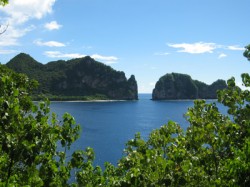
The flight from Hawaii to American Samoa arrives at night, so the warm moist air is immediately apparent - but tantalizing, as it is necessary to wait till the morning to begin to appreciate the people and places that make these islands unique. The 70,000 people who live on the five steep volcanic islands making up American Samoa enjoy mean daily temperatures that range from 81-83 °F all year with 125 - 250 inches of rainfall per year - and are still in the process of rebuilding from the Tsunami that came ashore as a 10 foot wave in some villages in September 2009.
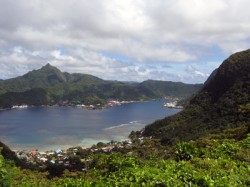
Tutuila is the island where 96% of the population live in a narrow coastal strip, nestled between steep sloping, highly endemic rainforest and diverse fringing coral reefs. Pago Pago harbor is the largest town with waters that are once again clear due to effluent from the tuna canning factories and treated waste water now being pumped off the shelf into deep water. This scenic vista of the harbor is from the top of steep mountains close by.
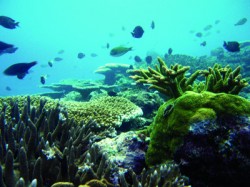
The surrounding fringing reefs are highly diverse with more than 250 species of corals and more than 900 species of fish, living in crystal clear waters that range from 82 up to 86 °F. In some of the more sandy areas, the seagrass Halophila (paddle weed) can be found, and both green sea turtles as well as hawksbill turtles can be occasionally found amongst the reef. Although large fish are now fairly rare, it is sometimes possible to see a black tipped reef shark, cruising amongst the coral heads and reef.
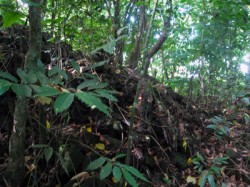
Diverse rainforest with more than 700 plant and fern species, some 30% of which are endemic to American Samoa, cover the steep slopes of these stunning volcanic islands. Occasionally, you will find taro fields or signs of fascinating traditional practices, such as the 'star-mounds' which are 6-10 foot tall mounds of rocks that were historically used by Matai (village chiefs) in competitions catching the Pacific Pigeon or lupe.
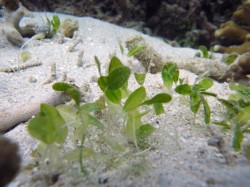
The people of American Samoa are some of the friendliest people in the world, with a deep respect for each other and their culture, based around family and village life. They have a very apparent and wonderful sense of place, which is understandable considering the spectacular natural beauty of these magnificent South Pacific islands.
Tim Carruthers and Jane Hawkey recently spent a week developing science communications products with the National Park of American Samoa.

